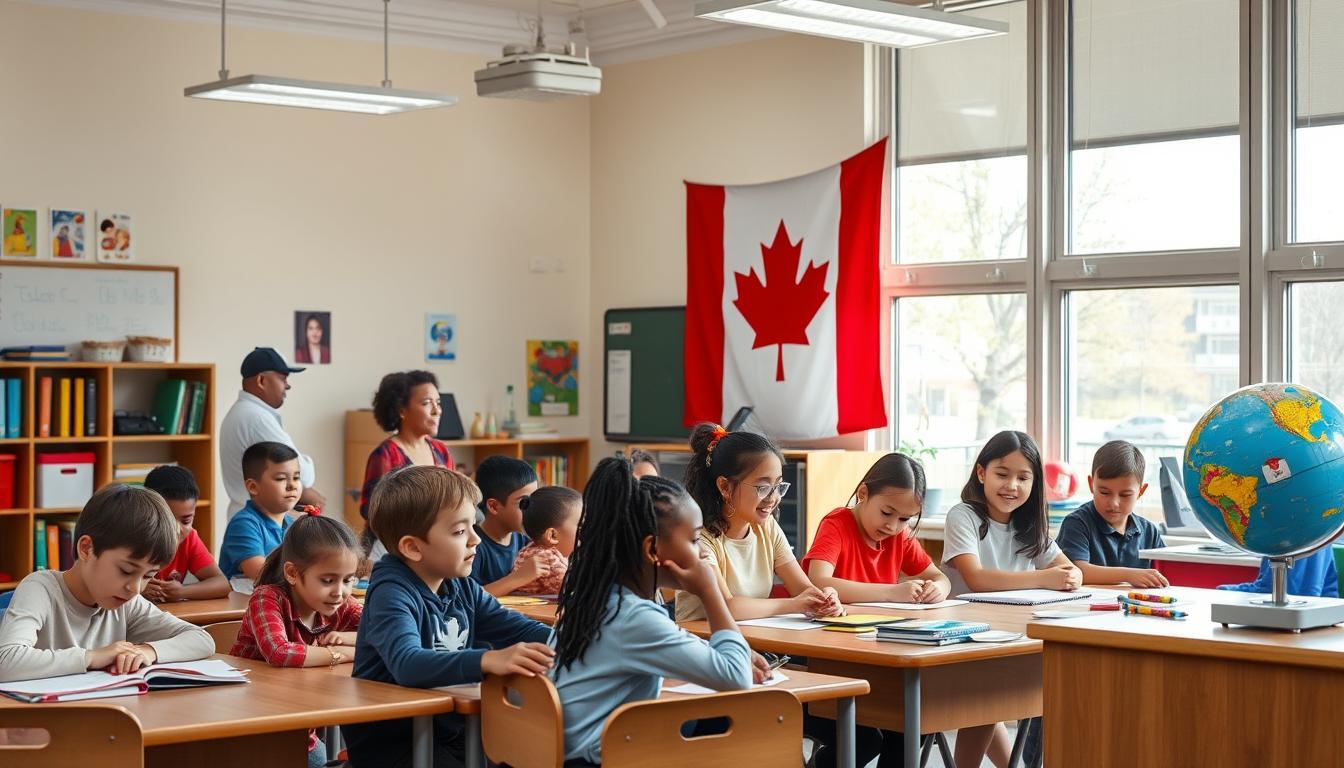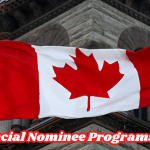The education system in Canada is known for its quality and accessibility. It shapes the future of millions of students across the nation. The system includes various levels, from elementary to higher education.
It ensures that all citizens and residents get comprehensive learning opportunities. This overview will explore the historical roots of the education system in Canada. It will highlight the roles of provincial governments and the variations in standards.

Introduction to the Education System in Canada
The education system in Canada has changed a lot over time. It was shaped by history and culture. This background shows how Canadian education values inclusivity and accessibility for all.
Historical Background
The start of Canada’s education system goes back to early European settlers. They set up schools that reflected the country’s diverse cultures. Today, Canada’s education system is a mix of different traditions, making it rich and varied.
Current Structure and Levels
Now, Canada’s education system has many levels, from early childhood to post-secondary. Each level aims to help students learn and grow. The provinces control their education, leading to different standards and practices. This diversity helps meet the needs of Canada’s diverse students.
Elementary and Secondary Education
The elementary and secondary education system is key in Canada. It aims to create a supportive learning space. This space helps students grow both academically and personally.
From early childhood to high school, schools focus on developing important skills. These skills are crucial for the future.
Schooling System Overview
In Canada, kids start school at age five and finish around age twelve. Then, they move to secondary education until they’re about eighteen. Most kids get free education thanks to public schools.
Schools are run by provinces and territories. Each has its own way of teaching and learning. This is to fit the needs of different communities.
Curriculum and Academic Standards
The curriculum in Canada covers important subjects like reading, math, science, and social studies. These subjects help students get ready for college or work.
Provincial education ministries set and update these standards. They make sure learning stays relevant and effective. This helps students get a well-rounded education.
Public vs Private Schools in Canada
Canada has both public and private schools. Public schools are mostly funded by the government. This makes education available to everyone.
Private schools, on the other hand, offer special programs and smaller classes. They might appeal to parents looking for something different for their kids. The variety of schools shows Canada’s dedication to meeting different family needs.
Higher Education in Canada
Higher education in Canada offers many opportunities for students. It focuses on research and innovation. This creates a place where students can grow and learn a lot.
Types of Academic Programs in Canada
Canada has programs in arts, sciences, engineering, technology, and business. You can get undergraduate and graduate degrees, or certificates and diplomas. This variety lets students find what they love and pursue their dreams.
Many schools also offer flexible learning options. This includes part-time and online classes. So, education is available for everyone.
Canadian Universities and Their Rankings
Canadian universities are top-ranked globally. They are known for great teachers, research chances, and support for students. Places like the University of Toronto and McGill University are favorites among international students.
This high ranking shows Canada’s dedication to quality education. Knowing this can help students choose the best school for them.

Education Policy in Canada
Understanding education policy in Canada is key to grasping its complexities. Each province has its own rules, leading to different ways of governing education. The federal government helps fund education, but provinces control their budgets and rules.
Government Regulation and Funding
Provincial governments mainly regulate education in Canada. This lets provinces create policies that fit their local needs. Education funding comes from both provinces and the federal government. Provinces use their budgets to meet community needs and get feedback.
This approach helps create a diverse educational environment. It’s tailored to the unique characteristics of each region.
Recent Changes in Education Policy
Canada’s education policy has seen big changes lately. The focus is now on making schools more inclusive. This includes teaching about different cultures and supporting students’ mental health.
The COVID-19 pandemic has also brought new teaching methods. Now, we have online classes and updated school programs.
These updates show Canada’s dedication to its students. The goal is to give every student the best education they can get.
Conclusion
Canada’s education system is excellent and always getting better. It’s a leader in quality education around the world. The country works together with its governments and the community to help students learn and grow.
Canada’s education system is ready for the future. It keeps up with society’s changes, giving all students a fair chance to succeed. The system’s ability to adapt and stay high-quality is truly impressive.
In short, Canada’s education system is a bright example of the country’s commitment to learning. As Canada looks ahead, it’s ready to make its education even better. It will continue to meet the needs of its students and the world.








